| The Hanshinkan Kid (1) The Great Hanshin Earthquake Why Haruki Murakami can't go home again |
||
| @@@ | ||
|
When I read best-selling author Haruki Murakami's "Henkyo Kinkyo" (Remote region,
short distance), I discovered we had something in common: he was in the same grade as me
growing up and that he attended an elementary school in Nishinomiya, Hyogo Prefecture,
which is close to my own school. | ||
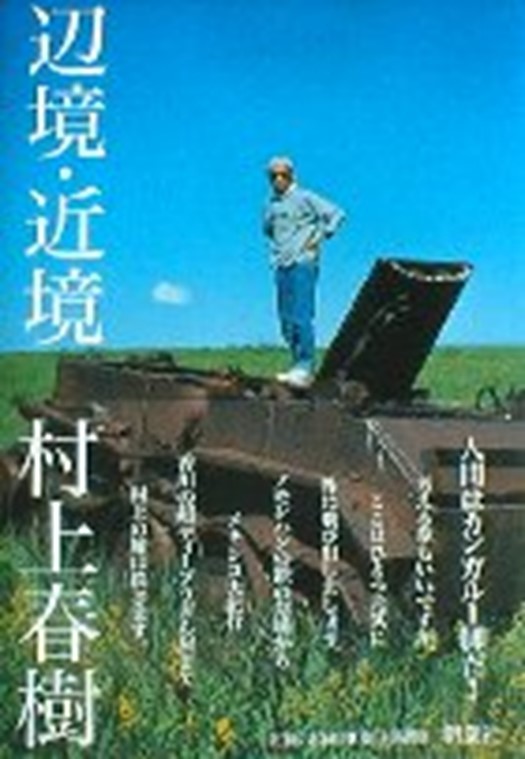 |
||
| Henkyo Kinkyo (Remote region, short distance) | ||
| In other words, I marveled, Murakami and I lived in the same area during the same period,
breathing the same air of the city. We also were affected by the epic earthquake on Jan. 17, 1995, which devastated the city of Kobe and other southern parts of Hyogo Prefecture. The hardest-hit areas, where more than 6,000 people perished in the Great Hanshin Earthquake, mostly coincide with the three cities where Murakami spent his early childhood and boyhood: Nishinomiya, Ashiya and Kobe. | ||
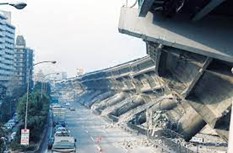 @ @ |
||
| In gHenkyo Kinkyo,h a collection of travel essays published in 1998, Murakami called
himself a gHanshinkan kid.h The cities of Nishinomiya and Ashiya are often referred to as
gHanshinkanh because they are located between Osaka and Kobe. ("Hanshin" is the word
created by combining two kanji representing Osaka and Kobe, respectively, while "kan" means in-between). He wrote in the essay that his parents lived in the city of Ashiya, but the 1995 Great Hanshin Earthquake made their house almost unlivable, and they moved to Kyoto immediately afterward. "Because of that, there is no longer a bond between me and the Hanshinkan--except for a collection of memories (my important asset).h I believe those memories laid the undercurrent for his works and made him a favorite to win the Nobel Prize in Literature, despite the fact that he has never again lived in Hanshinkan. AN AREA BLESSED WITH NATURE I was born and raised in Nishinomiya and was in the neighboring city of Ashiya when the devastating quake struck. The condominium in which I lived in then was half-destroyed, but I could still continue to live in my unit. I suffered a minor rib fracture, but otherwise, my family survived the disaster unscathed. In August of that year, I was transferred by my company to an office in Hong Kong. After the stint in Hong Kong, I worked in Singapore. I spent a total of seven years working in the two cities away from my family. In Hong Kong and in Singapore, I often found English or Chinese translations of Murakamifs books stacked high in local bookstores. Intrigued, I started reading his books by borrowing them from the library of the local association of Japanese expatriates or buying them at secondhand book fairs. I read most of his published works during this period, including "Henkyo Kinkyo." | ||
 @ @ |
||
| Orchard road Singapore | ||
| Murakami was born in Kyoto in 1949, but his parents moved to Nishinomiya, Hyogo
Prefecture, soon after his birth. He lived in the city until his family moved to Ashiya in the
same prefecture while he was a junior high school student. He graduated from Hyogo
Prefectural Kobe High School in 1967 and then entered Waseda University in Tokyo. The Hanshinkan area that Murakami grew up in is sandwiched between Osaka Bay and Mount Rokko, whose highest point is more than 900 meters high. Interurban railway lines were constructed in the area in the Meiji and Taisho eras (1868--1926), and business moguls in Osaka and Kobe built stately mansions there. The construction boom laid the foundation for the development of the Hanshinkan area as a stretch of growing communities of university-educated white-collar corporate employees, who were a newly emerging class at that time. High levels of cultural and economic standards of the area attracted legions of artists and intellectuals as well. | ||
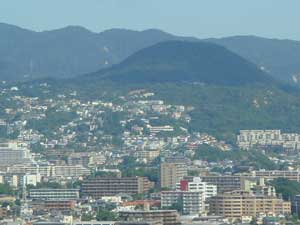 @ @ |
||
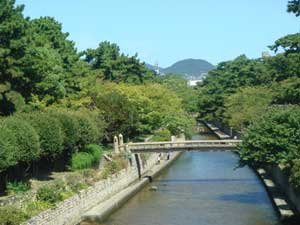 @ @ |
||
| Shukugawa river and Kabutoyama | ||
|
In gHenkyo Kinkyo,h Murakami also describes the area as gquiet and laid-back with something of a free-wheeling ambience, blessed with natural features like the sea and mountains, and located close to large cities.h He also enjoyed jazz, theater and movies and eventually became a typical "Hanshinkan kid," but probably with a more sophisticated touch, thanks to his instincts that are more sensitive than ours. FEELINGS OF LOSS AND DISAPPOINTMENT During my stint in Singapore, The Asahi Shimbun started a website called gMurakami Asahidoh for public exchanges between Murakami and his readers. I sent an e-mail to the site seeking advice on my second sonfs move to Tokyo from Nishinomiya because of the job he had landed. gIfm thinking about telling him, eCome back home someday,f when he leaves our home for Tokyo, but do you think he will be annoyed if I put such pressure on him?h I asked in my e-mail. Several days later, I received an e-mail reply from Murakami himself. | ||
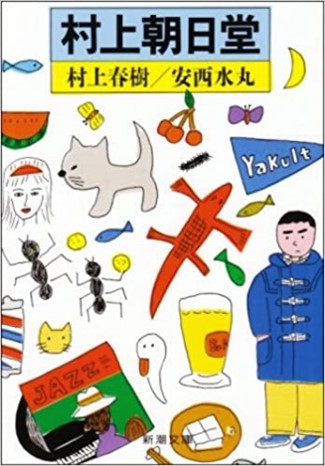 @ @ |
||
| Murakami Asahido | ||
| In his reply, he did not answer my question directly, but wrote that he lived in a coastal
town in Kanagawa Prefecture. He went on to say: "I think Ifm the kind of person who has
'passes through' experiences. Once Ifve passed through one place, I find it impossible to return to the place." He also wrote, "I also lament that todayfs Ashiya and Shukugawa seem to retain few traces of what they used to be in the old days. I also miss the real sea that has disappeared.h In gHenkyo Kinkyo,h Murakami also laments the land reclaimed from the sea by using dirt made available by cutting through mountains and about the towns damaged by the 1995 earthquake through remarks such as, "We can never get back a landscape once it is gone." | ||
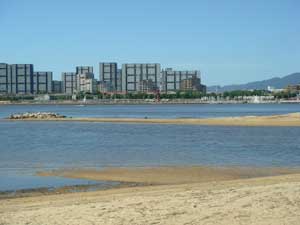 @ @ |
||
| High-rise condominium built on reclaimed land | ||
| I know the background behind Murakami's feelings of loss and disappointment. In the 1960s, when Murakami was in his final years of elementary school and then started attending junior high school, the Nishinomiya municipal assembly approved a plan to reclaim the foreshore of the coastal city and build a petrochemical complex on the land. But the plan was abandoned in the face of a spirited campaign staged against it by local sake brewers and many citizens. Meanwhile, the reclamation of Ashiyafs beach, which began around the time when Murakami entered Waseda University, was completed in 1975, and a high-rise building was constructed on the reclaimed land in 1978. LANDSCAPE STILL EVOKES MURAKAMI WORLD 27 years have passed since the devastating Great Hanshin Earthquake. While it is impossible to imagine the depth of the traumas the disaster has inflicted on survivors and the bereaved families of victims, the town has completely recovered from the devastation. There are now few visible signs left of what the quake did to the town, except for onuments of the disaster. Nishinomiya, where I currently live, and Ashiya are two of the few local cities where the population is growing despite the nationfs demographic decline. Particularly in Nishinomiya, the number of children is rising so fast that elementary and junior high schools buildings are being rebuilt or expanded. | ||
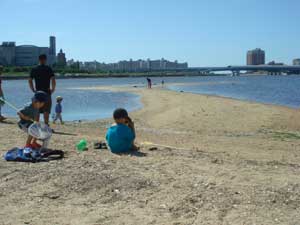 @ @ |
||
| Omaehama(Koroen) beach in Nishinomiya | ||
| Indeed, the sea that has been disfigured by urban development cannot be restored. But
there still remains a natural sand beach, and it serves as a sanctuary for migratory birds
from late autumn to early spring. Ayu sweetfish, which can only live in limpid streams,
swim upstream in the river flowing from the mountain into the sea that Murakami loved. Common kingfishers fly from the mountain to the train station and residential areas. The landscape has changed somewhat, but it still evokes many archetypal images of the hometown that appears in Murakamifs works. I will continue looking for scenes from the Hanshinkan area that are embedded in Murakamifs writings, like pictures concealed within another picture. | ||
Copyright Since 2009 OFFICE ATSURO KAWAUCHI. All rights reserved.